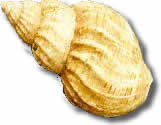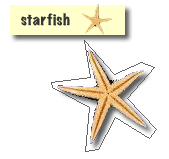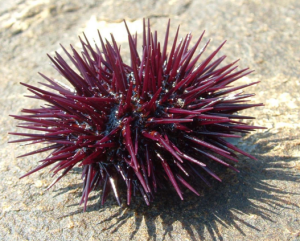What lives in tidal pools?
Although tidal pools are complex environments, it is easy to focus children’s attention on discovering and observing characteristics of a few tidepool animals and plants and their survival requirements.
Start the unit with a collection of dead and dried shells, crabs, limpets, barnacles and other items that children can touch and examine.
Tips for teaching about tidal pool animals
- Don’t put anything on display that is precious to you or very delicate as it will probably get broken.
- Don’t collect anything from a park as their rule, “Leave only footprints, take only memories” leaves the parks for all to enjoy.
- If you live near the ocean, it is easy to make a collection of dead, dried tide pool animals and they can be found washed up on the beach.
- Dried sea animals can also be purchased.
- If you do collect items from the beach, check that there aren’t bits of decaying animals left on the shells or your display will have quite the aroma!
Displaying shells for young children…
This method works well for displaying shells and other invertebrates (animals lacking backbones):
- Put a large piece of sturdy paper on your science center display area.
- Place a collection of whelk, barnacles, sea urchin, clam, sea stars and other shells with a variety of shapes and sizes on the paper leaving space around each one.
- Trace around each shell with a black felt marker. Children find it easy to put the shell back in the same place with this method
- Make a name card for each creature, with the animal’s name and a simple drawing of the animal on it. Place the card near the actual shell.
- Children can take these cards to the science center or literacy center if they are making booklets or drawings of the tidal pool shells.
Classification activity
Have children classify invertebrates found in a tidal pool by observing their appearance and characteristics:
- Bring ten or so shells, crabs or other plant or animal from the science center display to the carpet.
- Children sit in a circle on the rug with the items laid out in the center.
- Show the items and ask the children what they notice about each one.
- Ask children for suggestions on how to sort them. For example, “All these ones have round shapes and these ones don’t have round shapes.
Common tidal pool animals
Starfish
Starfish or “sea stars,” are a favorite of children exploring the rocky inter tidal zone. Starfish move slowly across the rocks on suction feet, which they also use to pry open mussels for supper.
Tidal pools – starfish art activities, free tracers and literature page.
Sea Anemones
The image below (from Wikkipedia) is from a 1904 collection by Ernst Haeckel.
Sea anemones look like flowers but are actually animals. They have tentacles, which are all around their mouths. The tentacles come in all different colors, red, yellow, green and more.They use their tentacles to sting fish and other small animals and then eat them.
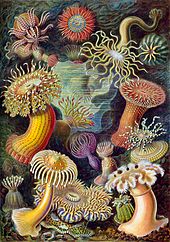
Sea Urchins
Sea urchins have round shells which are covered in prickly spines. They come mostly in dull colors and are fairly small. Sea otters (see image), wolf eels and other predators eat them.
Mussels
Mussels attach themselves to rocks, with deep blue or black shells, are common in Pacific waters, as are the slightly larger California mussels. California mussels have bright orange flesh when cracked open. 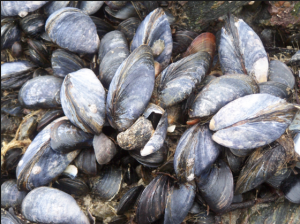
Whelks
Whelks are very common in tidal pools. They are sea snails and come in various sizes. They have a hard shell with a soft snail like creature inside and they graze algae off the rocks.
